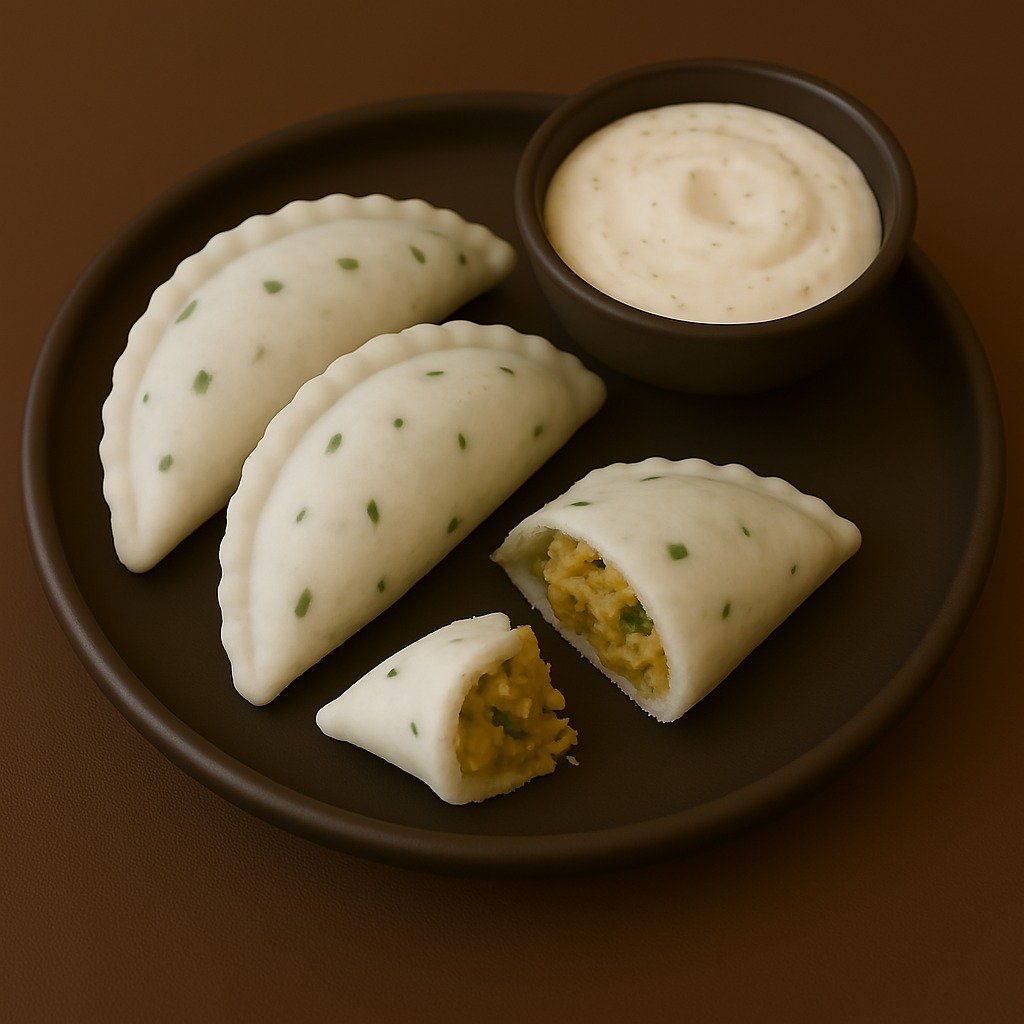Warm, spiced, and bursting with flavour, Kara Kadubu is a traditional steamed delicacy that makes festive mornings and sacred offerings all the more special. With a savory filling wrapped in soft rice flour dough, each bite is a nostalgic reminder of grandmothers’ hands and temple kitchens. Often prepared during Ganesh Chaturthi, this is the savoury cousin of the beloved sweet modak.
What Is Kara Kadubu?
Kara Kadubu (also called Uppu Kozhukattai in Tamil) is a South Indian steamed dumpling filled with a spicy lentil-coconut mixture. “Kara” means spicy, and “kadubu” refers to dumplings. It is traditionally made during Ganesh Chaturthi as a savoury offering to Lord Ganesha and is also a wholesome, protein-rich snack or breakfast.
How to Make Kara Kadubu: The Traditional Way
🛒 Ingredients:
For the outer dough
- 1 cup rice flour
- 1¼ cups water
- 1 tsp oil or ghee
- A pinch of salt
For the kara filling
- ½ cup moong dal
- 1 tsp oil
- 1 tsp mustard seeds
- 1 tsp urad dal
- 1–2 green chilies (finely chopped)
- 1 sprig curry leaves
- 2 tbsp fresh coconut (grated)
- A pinch of asafoetida (hing)
- Salt to taste
🥣 Method:
- Prepare the dough
- Boil water with salt and oil.
- Reduce the flame and add rice flour slowly, stirring until it forms a soft dough.
- Cover and let rest. Once cool, knead it gently into a smooth dough.
- Make the filling
- Soak and cook moong dal until soft but not mushy. Drain well and mash slightly.
- Heat oil, splutter mustard seeds and urad dal. Add green chilies, curry leaves, hing, and sauté.
- Add the cooked dal, coconut, salt, and mix well. Let it cool.
- Shape and steam
- Take small portions of the dough, flatten into discs.
- Place a spoonful of filling in the center and fold into half-moon or modak shape, sealing the edges.
- Steam for 10–12 minutes or until the kadubus are glossy and firm. Serve hot.
🌿 Ayurvedic Benefits
- The steamed method keeps Agni strong and digestion smooth.
- Moong dal provides madhura rasa (sweet taste) and balya (strength-giving) qualities.
- Coconut is nourishing, cooling, and boosts ojas.
- Hing, mustard, and curry leaves pacify Vata and prevent bloating.
- Rice flour is easy to digest and tridosha-friendly in steamed form.
💡Pro Tips from the Indian Kitchen
- For soft kadubus, always knead the dough while warm.
- Don’t overcook the moong dal—it should retain texture.
- Use fresh coconut for a juicy, sweet contrast to the spices.
- Add a pinch of jeera (cumin) or grated ginger for extra aroma in the filling.
- Cover shaped kadubus with a damp cloth before steaming to prevent drying out.
❤️ Why We Love Kara Kadubu
- A festival food with a spicy twist—perfect balance of tradition and taste.
- Makes a wholesome snack, breakfast, or naivedyam.
- Steamed, oil-light, and gut-friendly.
- Fills the house with temple-like aromas.
- A chance to get creative with the filling—add greens, grated veggies, or sprouts!
🧘 Ideal For
- Ganesh Chaturthi or other festival offerings
- Breakfast or evening tiffin with chutney or rasam
- Kids’ tiffin boxes—fun to shape and eat
- Ayurvedic meal plans seeking light, warm, nourishing foods
- Anyone wanting steamed snacks over fried treats

